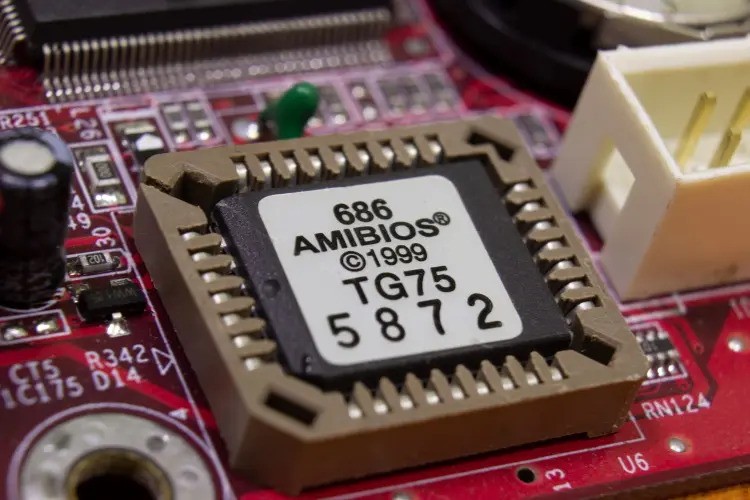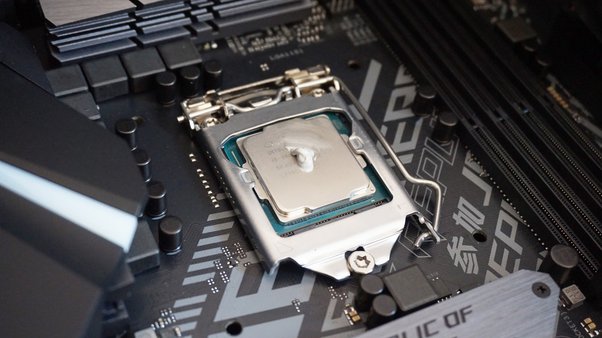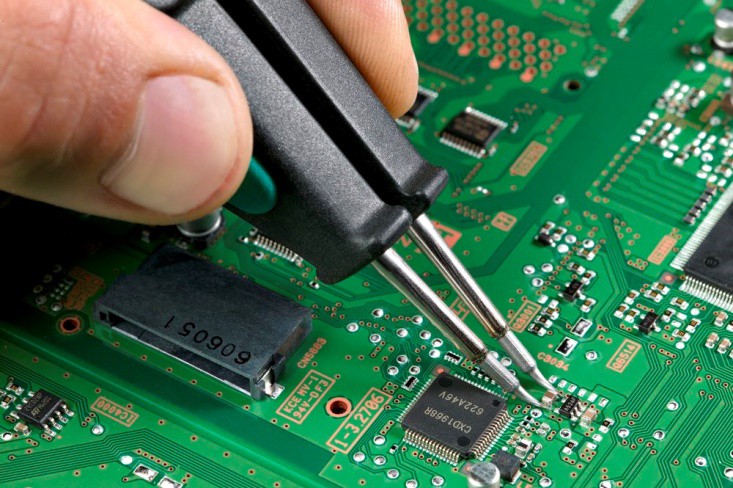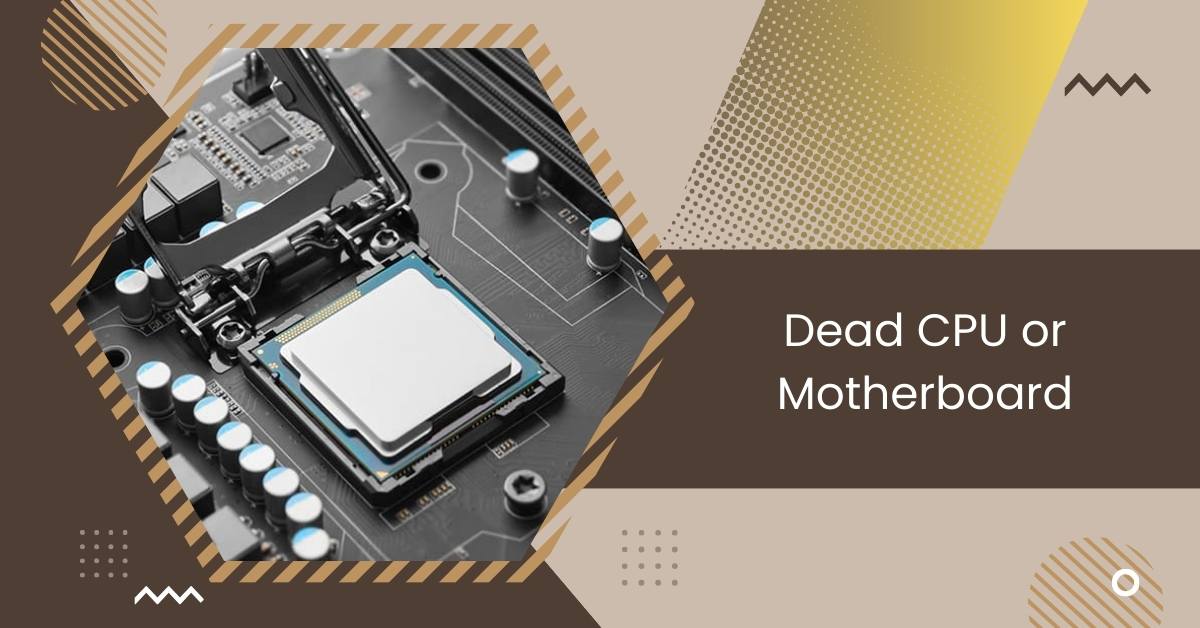In the ever-evolving world of technology, the heart of your computer system lies in the central processing unit (CPU) and the motherboard.
Experiencing issues like a dead CPU or motherboard? Start by checking the power source, then inspect for visible damage on the motherboard. If you detect a burning smell or signs of damage, it could indicate a dead CPU or faulty motherboard.
This article will delve into the diagnosis, CPU Failures, and solutions for a dead CPU or motherboard.
Diagnosing Dead CPU
If your computer’s CPU is not working, it’s simple to figure out. Your computer won’t go past the starting point (POST) because it needs a working CPU to boot up.
Follow the steps below to check if the CPU is causing the issue.
1. Debug LED
If there’s a light on the motherboard called the CPU LED that stays on, it means your computer can’t start because of issues with the CPU.
These issues might be things like needing more power or the pins on the CPU being bent. To be sure the CPU is the problem, look at the verification section below.
2. POST Codes
If your computer has a debug port, it will show different codes in numbers and letters to tell you about various starting issues. For CPU problems, you’ll typically see these codes:
- 56
- 57
- 58
- 59
- 5A
- D0
Check the verification section for more steps.
3. Beep Codes

If you’ve added a speaker to your motherboard, it will make different beeping sounds to show CPU issues.
- 5 beeps
- 7 beeps
- 11 beeps
Look at the verification section below for more steps.
4. Verifying CPU Status
The POST diagnostics only reveal CPU-related issues, not if the CPU is entirely dysfunctional. Test your CPU in another computer or try a known working CPU to confirm if it’s the cause.
5. Visual Inspection
Start by looking closely at the CPU and the nearby parts for any physical harm. Check for burned areas, melted parts, or cracks on the CPU. Also, inspect the region for capacitors that are bulging or leaking and examine the CPU pins for damage. A flashlight can help you see everything.
Here’s a step-by-step guide for a careful examination:
- Search for burned spots, melted parts, or cracks directly on the CPU.
- Inspect the area for capacitors that are bulging or leaking near the CPU.
- Check the CPU pins to make sure none are bent or broken.
- Use a flashlight to see the components better.
- If you spot any visible signs of damage, it is likely that the CPU is no longer working.
6. Power On and Listen for Beeps
Start your computer and pay attention to any beep codes it makes. These beeps, coming from the BIOS, are like messages telling you about hardware problems.
Different beep patterns mean various issues, and they could point to a problem with the CPU. If you don’t hear any beeps, the CPU might not work, as the BIOS can’t start up properly.
Here’s a simple guide:
- Power on your computer and listen for beep codes.
- These beeps are signals from the BIOS telling you about hardware problems.
- Different beep patterns can mean various issues related to a dead CPU.
- Check your motherboard’s manual or the manufacturer’s website for the beep codes.
- If there are no beeps at all, it could indicate a dead CPU, as the BIOS is unable to start up.
7. Check for Overheating
Gently touch the CPU heatsink. If it feels extremely hot, the CPU may have problems or an issue with the cooling system.
Here’s a simple guide:
- Be careful as it might be very hot.
- Watch out for signs like sudden restarts, warning beeps, or unusual fan behavior indicating overheating.
- Use temperature monitoring software like SpeedFan to monitor the CPU temperature.
Read: CPU Userbenchmark Bias – Investigate CPU Test Equality!
Understanding CPU Failures

Understanding CPU failures involves recognizing symptoms like failure to boot, no display, or abnormal sounds during startup. Diagnosis may require professional assistance for accurate identification and resolution.
Identifying A Failed / Failing Computer Processor
Identifying a failed or failing computer processor involves recognizing symptoms such as frequent system crashes, overheating, performance degradation, and error messages related to CPU issues during operation.
Interpreting Continuous Beep Sounds
Interpreting continuous beep sounds during startup can indicate hardware issues, commonly related to the motherboard, memory, or graphics card. Consult your computer’s manual or manufacturer’s website for specific beep code meanings.
Replacing a Bad Processor

Replacing a bad processor involves identifying compatible replacements, safely removing the old CPU, applying thermal paste to the new one, and securely installing it into the motherboard socket.
Signs of a Dying CPU
Signs of a dying CPU include frequent system crashes, overheating, sudden performance drops, error messages related to CPU issues, and the inability to boot up properly.
8 Signs Your Motherboard Is Dead
1. Booting Your Computer Makes Your Motherboard Beep
When you power on your computer, if the motherboard emits beeping sounds, it could indicate a malfunction.
2. POST Returns Errors or Fails to Run
If the Power-On Self-Test (POST) encounters errors or fails to initiate, your motherboard may be failing.
3. Blinking Lights Appear on Your Motherboard
Blinking lights on the motherboard, especially if they’re not part of the regular operation, suggest hardware issues.
4. Your Motherboard Shows Signs of Physical Damage
Physical damage like burnt areas, melted parts, or visibly damaged components on the motherboard indicate potential failure.
Read: Process Lasso Error Setting Process CPU Affinity – Resolve!
5. Installing a New CMOS Battery Fails to Revive the Motherboard
If replacing the CMOS battery doesn’t resolve issues with the motherboard, it may be beyond repair.
6. Replacing the RAM and Removing the Video Card Doesn’t Help
If troubleshooting steps like swapping RAM or removing the video card don’t resolve problems, the motherboard may be faulty.
7. Your Components Work When Used With a Different Motherboard
If your components usually function when connected to a different motherboard, it suggests that the original motherboard is defective.
8. Your Motherboard Won’t Turn On Even When Breadboarded
If the motherboard fails to power on even when isolated outside the case (breadboarded), it likely has critical issues.
Replace Your Motherboard and Revive Your System
Replacing your motherboard can potentially revive your system if the original motherboard is faulty or outdated. Ensure compatibility with other components and follow proper installation procedures for optimal performance.
Read: Swapped CPU Now No Display – Resolve All Issues – 2024!
When to Seek Professional Help
1. Complexity of Repairs
If the repairs seem complex or beyond your expertise, seeking professional help is advisable. Attempting intricate repairs without the necessary skills can lead to further damage.
2. Warranty Status
Check the warranty status of your CPU and motherboard. If they are still under warranty, consider contacting the manufacturer for assistance or a possible replacement.
3. Cost-Effectiveness
Evaluate the cost of repairs against the value of your system. In some cases, investing in a new CPU or motherboard may be more cost-effective than extensive repairs.
Upgrading vs. Repairing

1. Factors to Consider
When faced with a dead CPU or motherboard, weigh the factors of upgrading versus repairing. Consider your system’s age, the extent of the damage, and your budget.
2. Cost Analysis
Perform a cost analysis to determine the most economical solution. Sometimes, upgrading to newer components may be a more viable and future-proof option.
Read: CPU Caterr Detected – Solve CPU Catering Detected Error ASAP
3. Technological Advancements
Stay informed about technological advancements. Upgrading your CPU or motherboard can not only resolve current issues but also enhance overall system performance.
Choosing Between AMD and Intel CPUs
1. Performance Differences
AMD and Intel offer CPUs with varying performance levels. Research and compare the specifications to choose the CPU that best suits your needs.
2. Compatibility with Motherboards
Ensure compatibility between your chosen CPU and motherboard. Different CPUs may require specific motherboard types, so verify before purchasing.
3. Personal Preferences
Consider personal preferences when selecting between AMD and Intel. Some users may prefer one brand over the other based on past experiences or brand loyalty.
How To Determine If My Motherboard Or CPU Is Dead
To determine if your motherboard or CPU is dead, look for symptoms like failure to boot, no display, or continuous beeping sounds during startup. Consider professional diagnosis if unsure.
Read: CPU Speed 1.1 GHz – Exploring Its Impact On Performance!
Dead CPU or Dead Motherboard?
Determining whether you have a dead CPU or a dead motherboard involves identifying symptoms like failure to boot, no display, or unusual beeping sounds during startup. A professional diagnosis may be necessary.
Dead Motherboard Symptoms
Symptoms of a dead motherboard include failure to power on, no response to peripherals like keyboards or mice, and a burning smell emanating from the computer case.
Will A Dead Motherboard Light Up
No, a dead motherboard typically won’t light up or show any signs of power. If it’s not powering on at all, it may indicate a malfunction.
Will A Motherboard Turn On With A Dead Cpu
No, a motherboard will not typically turn on if the CPU is dead. The CPU is essential for the motherboard to function appropriately and initiate the boot process.
Read: Why Does My CPU Keep Spiking – Causes And Tips In 2024!
How To Check If Motherboard Is Receiving Power
To check if the motherboard is receiving power, ensure that the power supply unit is connected and switched on. Look for indicator lights on the motherboard or use a multimeter to test voltage levels.
How To Check If I Have A Dead Motherboard Or A Dead Cpu
To determine if you have a dead motherboard or a dead CPU, observe symptoms like failure to boot, no display, or unusual beeping sounds during startup. Professional diagnosis may be necessary for certainty.
How To Fix A Dead Motherboard

Fixing a dead motherboard can be challenging and may require professional assistance. Start by checking connections, replacing the CMOS battery, and testing components like RAM and CPU. If there is no success, consider motherboard replacement.
A Useful Guide To Check If Your Motherboard Is Gone
This guide helps you identify if your motherboard is faulty by looking for signs like failure to power on, unresponsiveness to peripherals, and detecting any burning smell from the computer.
Read: AVConferenced CPU – Boost Your Conference Experience – 2024
Bad CPU or Mobo? No Boot, No Fans, No Sign Of Life.
If your computer shows no signs of life—no boot, no fan activity, and no response—either the CPU or motherboard could be the culprit. Professional diagnosis is advisable to pinpoint the issue accurately.
Could A Dead CPU cause A System Not To Power On?
Yes, a dead CPU could indeed cause a system not to power on. The CPU plays a crucial role in the boot process, and if it’s malfunctioning, the system may fail to initialize.
Related Questions
1. Can a dead CPU or motherboard be repaired?
Repairing a dead CPU or motherboard is possible in some cases, but it depends on the extent of the damage. Seeking professional help is recommended for complex repairs.
2. How long do CPUs and motherboards typically last?
The lifespan of CPUs and motherboards varies, but on average, they can last between 5 to 10 years with proper maintenance.
3. Is it worth upgrading an old motherboard?
The decision to upgrade an old motherboard depends on compatibility, performance needs, and budget. Evaluate the cost-effectiveness of upgrading versus purchasing new components.
4. What are the signs of a failing power supply?
Signs of a failing power supply include random shutdowns, an electrical burning smell, and unusual noises from the power supply unit.
5. Are there any DIY solutions for motherboard failures?
Yes, some DIY solutions include reseating the CPU, resetting the CMOS battery, and checking for burnt components. However, these solutions may only apply to some cases, and professional assistance may be necessary.
6. How can I tell if my CPU is dead?
Signs of a dead CPU include failure to boot, no display, overheating, and system crashes. Test with known working components or seek a professional diagnosis for confirmation.
7. What should I do if my CPU is dead?
If your CPU is dead, consider replacing it with a compatible model. Ensure proper installation and thermal management to prevent future issues.
8. Can a CPU die of old age?
While CPUs don’t have a specific lifespan, prolonged use, overclocking, and exposure to high temperatures can degrade their performance over time, eventually leading to failure.
9. What causes a CPU to die?
CPUs can die due to various factors, including overheating, electrical surges, physical damage, manufacturing defects, and prolonged stress from overclocking or high computational loads.
10. How do I revive a dead CPU?
Reviving a dead CPU is typically not feasible due to its complex nature. Ensure proper cooling and power supply; if suspicions persist, consider professional diagnosis or replacement.
Conclusion
The article provides valuable insights into diagnosing and dealing with dead CPU or motherboard issues, offering practical steps, emphasizing visual inspections, and guiding decisions on repairs or upgrades.
It also touches on seeking professional help and considerations for choosing between AMD and Intel CPUs.
Also Read
- CPU Usage Drops When I Open Task Manager – Ultimate Guide!
- Is Tarkov Cpu Or Gpu Intensive – A Complete Tips In 2024!
- Is Fortnite Cpu Or Gpu Heavy – Find Best Setup For Fortnite!

Hi everyone, Johns Jack here, your approachable tech aficionado! I’m passionate about CPUs and thrive on keeping up with the newest tech developments. Join me as we delve into the dynamic realm of technology! Visit: Techy Impacts

